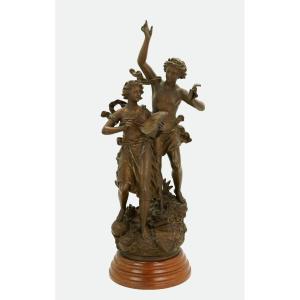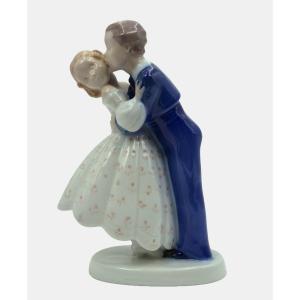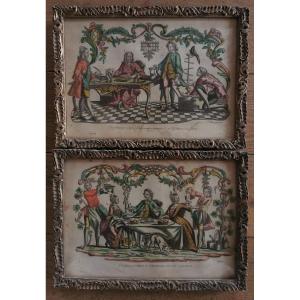- Paperwith losses in the upper left area, old mounting remnants, outside of thedepiction partially wavy and with slight creases, pencil annotations, thedepiction itself in good and colorful condition
- DivineHumanity -
Christkneels at the foot of a long table and washes the feet of the disciples afterthe Last Supper. With outstretched arms, the apostle before Christ reacts tothe "humiliation" of the Savior, who, however, practices exemplarycharity by washing his feet. Hinsch thus expresses the hope that after the timeof terror, a human community can be cultivated again.Looking atChrist from the side, we see the table from above, which has the same structureas the background of the painting. As a result, the table of the Last Supper,which emerges from the background, is present throughout the painting. Theribbon of the disciples is also integrated into the vertical stripes leading toChrist, giving them an ornamental quality and adding tension to the structureof the image.
About theartist
HenryHinsch grew up in Riga. During the October Revolution, the family fled toGermany in 1917. In Stettin, he studied graphic art under Vincent Weber at theAcademy of Applied Arts. On the recommendation of the director of the HamburgKunsthalle, Gustav Pauli, the talented Hinsch received a scholarship to theBerlin Art Academy, where he studied under Fritz Burmann from 1937 to 1939.After the end of the war, he settled in Göttingen as a freelance artist. There,together with Helmut Bönitz, he founded the artists' association 'Kreis 34' andbecame involved in the 'Bund Bildender Künstler (BBK)'. Study trips took him toItaly, France, Spain, the Netherlands, Austria and Belgium. In 1979,the painter and sculptor was awarded the city's medal of honor.
































 Le Magazine de PROANTIC
Le Magazine de PROANTIC TRÉSORS Magazine
TRÉSORS Magazine Rivista Artiquariato
Rivista Artiquariato